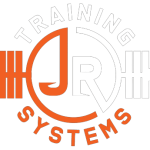Whether you are a competitive athlete or someone who enjoys strength training, having a strong deadlift will not only increase the rest of your lifts, but it will also unlock strength and size like no other exercise. When performed correctly, the deadlift is truly the best full-body exercise you can do. Deadlifts are taxing on nearly every muscle in your body, predominately your posterior chain (hamstrings, glutes, spinal erectors, and lats).
Stop Training to Failure
Out of all the exercises that you don’t want to fail on, the deadlift is at the top of the list. Not only is the risk of injury higher, but the negative effect this has on your central nervous system is nothing to mess around with. So, why is the deadlift so unforgiving on your central nervous system?
- It works your grip first; a key indicator of a burnt-out CNS is a decrease in your grip strength.
- It begins with an “dead start.” As opposed to a squat or a bench press, you are starting off the ground with no stretch reflex. This takes a lot from you to generate the initial force.
- You can deadlift more weight than any other lift (most of the time). This places a higher demand on your nervous system
When your central nervous system is tapped, the rest of your training will suffer. And not only will your training be negatively affected, your body composition, sleep, and mental state will also see a sharp decline. The best way to go about your deadlift training is to stick to 75-85 percent of your one- rep max. If you don’t know what your one-rep max is, always leave 2-3 reps left in the tank. In addition to adjusting how much you are lifting, make sure you are lifting with a perfect technique. Record your sets and watch them after your session to see where you could have improved.
You Need Stronger Hamstrings and Glutes
The vast majority of people have underdeveloped hamstrings and glutes. We live in a world where sitting for 8-10 hours a day has become normalized. Sitting all day inhibits the use of our hamstrings and glutes, essentially putting them to sleep. A strong deadlift requires a STRONG set of hamstrings and glutes. Incorporate the following accessory exercises to help you have a positive carryover to your deadlift:
- Barbell good mornings: 3-4 sets, 5-8 reps
- Deficit deadlifts: standing on 2-3” plate, 3 sets of 5 reps at 65-75 percent of your one rep max
- Hamstring curls: 3-5 sets of 8-20 reps
Don’t Grip N Rip!
Having mental cues can help make your movements feel better, while ensuring that you are feeling the movement in all the right places. Here are my top three cues for the deadlift; think of these as a checklist to use when you begin your reps.
- Big breath of air: fill your stomach with air, trying to expand your trunk in a 360-degree manner, pressing your sides out. This is how you properly brace your core.
- Hide your armpits! Pretend someone is going to tickle you from behind you. Pushing your shoulders down will help you to engage your lats.
- Push the ground away from you: Don’t think about picking the bar up off the ground. After you are braced and your lats are locked, imagine you are pushing the ground away from you. This will help set you up for a successful rep.
One last thing. A major contributing factor to a strong deadlift is grip strength, and hanging from a bar is an easy and effective way to increase your grip strength. I like to finish my deadlift sessions with 2-3 sets of hangs, aiming to accumulate about 3 minutes over the course of those 2-3 sets. Best of luck!

